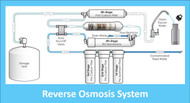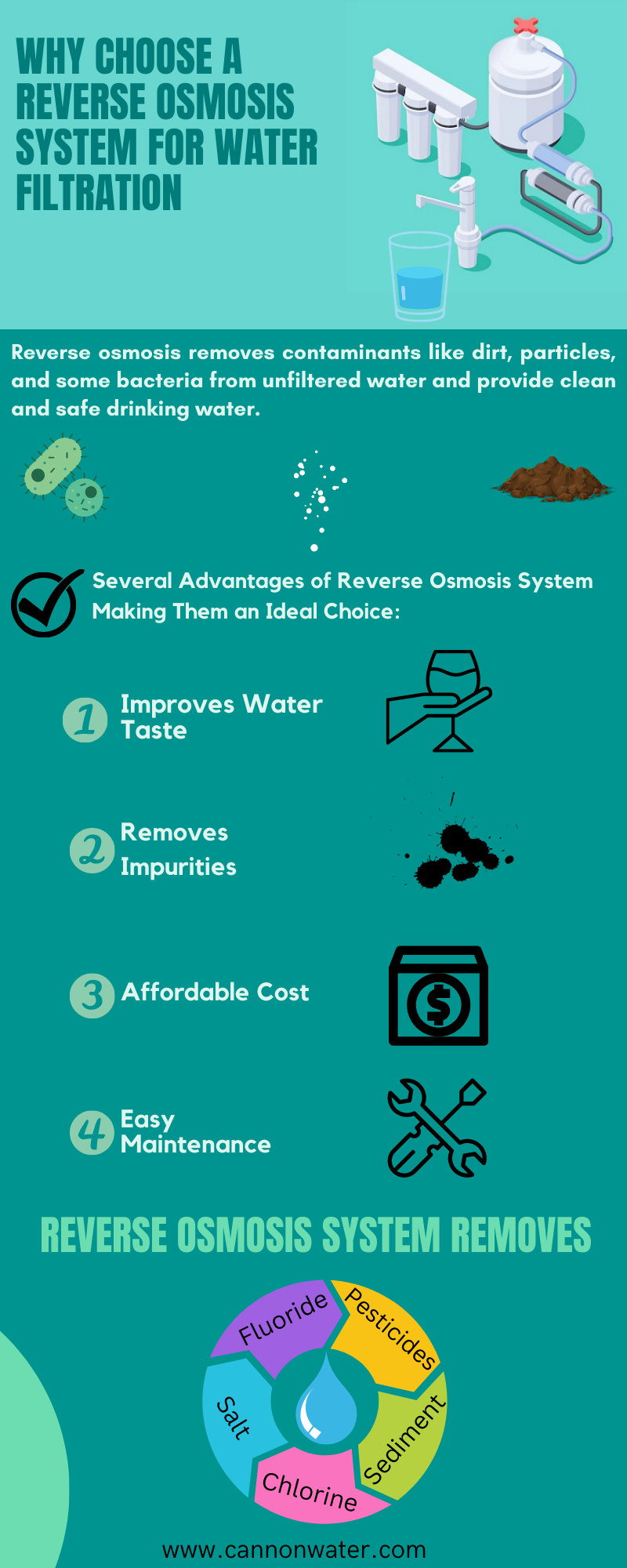A Brief Discussion on Reverse Osmosis (RO) System
Posted by David Cannon on 16th Jun 2020

Clean water is a primary necessity of almost all living organisms. This can be achieved using several water purification methods such as flocculation, sedimentation, filtration, chlorination, and many more. While these methods remove the dirt, particles, and some bacteria in water, they cannot act upon a heavy amount of minerals present in well water for instance.
So, reverse osmosis is a technique that has served the purpose of purifying well waters and reducing the number of metals and chemicals such as chlorine if any. This also reduces heavy taste and odor. So, the reverse osmosis (RO) water purification system is one of the most efficient methods of water purification and is used in many households as well to get clean and safe drinking water. So, why do millions of people choose RO systems for their homes? Read the post to know more.
How Does Reverse Osmosis (RO) System Works?
Before getting into reverse osmosis, it is important to understand what osmosis is and how it works? Osmosis is a naturally occurring phenomenon. It is a process wherein a diluted solution will tend to flow into a strong saline solution. Examples: when plant roots absorb soil and kidneys absorb water from the blood. In other words, it is the flow of fluid from a higher concentration to a lower concentration area.
Now, we will see how reverse osmosis works.
- Unlike osmosis, reverse osmosis requires external pressure to work as it acts against gravity, which is from lower to higher concentration area. This external pressure is applied to a highly soluble fluid that enables it to pass through a selectively permeable membrane to a lower concentrate fluid.
- The membrane allows water to flow through while blocking larger molecules like contaminants.
- The RO process leaves the solvent or freshwater on one side and higher concentrations of solute on the other side.
Why Choose a Reverse Osmosis System for Water Filtration?
There are several advantages of reverse osmosis system making them an ideal choice than other water filtration systems, especially for hard water. This system takes the water purification process to the next level while offering completely safe and clean water to drink.
- Improves Taste: This water filtration system can remove 95% to 99% of total dissolved solids (TDS). This helps improve odor, taste, and appearance of water by removing impurities that cause odor and taste problems.
Infographic: Why Choose Reverse Osmosis System for Water Filtration
- Removes Impurities: In conjunction with a carbon filter, this system removes chlorine and chloramines along with some metals such as iron and magnesium. RO removes harmful pollutants from water including bacteria, parasites, sulfates, fluoride, arsenic, nitrates, pesticides, and much more.
- Affordable Cost and Easy Maintenance: The system provides better-than-bottled water in terms of purity and freshness. It requires maintenance about twice a year, which mainly involves cleaning and changing the carbon filters. So, the investment amount is affordable, and it is cost-effective in the long run. The system can be dismantled, and once the maintenance is over, you can put it up again and mount back on the wall.
Thus, the reverse osmosis water purification system is one outstanding way to meet your all water purification needs. The system is proven to be the best, reliable, as well as a cost-effective solution for purifying water. If you are eagerly looking to purchase an RO system, then it is important to employ a trustworthy industry supplier like Cannon Water Technology, Inc. Their RO systems are designed to bring to your home cleaner and safer water. They are a one-stop source to purchase water purifying equipment from reliable brands like Lakos, Myron L, and more.

